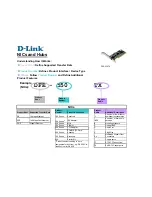
The following figure shows where the Cisco-supported protocols for the device operate within the IP multicast
environment.
Figure 12: IP Multicast Routing Protocols
According to IPv4 multicast standards, the MAC destination multicast address begins with 0100:5e and is
appended by the last 23 bits of the IP address. For example, if the IP destination address is 239.1.1.39, the
MAC destination address is 0100:5e01:0127.
A multicast packet is unmatched when the destination IPv4 address does not match the destination MAC
address. The device forwards the unmatched packet in hardware based upon the MAC address table. If the
destination MAC address is not in the MAC address table, the device floods the packet to the all port in the
same VLAN as the receiving port.
Related Topics
Configuring Basic IP Multicast Routing (CLI), on page 256
Multicast Forwarding Information Base Overview
The device uses the Multicast Forwarding Information Base (MFIB) architecture and the Multicast Routing
Information Base (MRIB) for IP multicast.
The MFIB architecture provides both modularity and separation between the multicast control plane (Protocol
Independent Multicast [PIM] and Internet Group Management Protocol [IGMP]) and the multicast forwarding
plane (MFIB). This architecture is used in Cisco IOS IPv6 multicast implementations.
MFIB itself is a multicast routing protocol independent forwarding engine; that is, it does not depend on PIM
or any other multicast routing protocol. It is responsible for:
•
Forwarding multicast packets
•
Registering with the MRIB to learn the entry and interface flags set by the control plane
•
Handling data-driven events that must be sent to the control plane
•
Maintaining counts, rates, and bytes of received, dropped, and forwarded multicast packets
IP Multicast Routing Configuration Guide, Cisco IOS XE Release 3SE (Catalyst 3650 Switches)
OL-29890-01
253
Configuring IP Multicast Routing
Cisco
’
s Implementation of IP Multicast Routing
















































